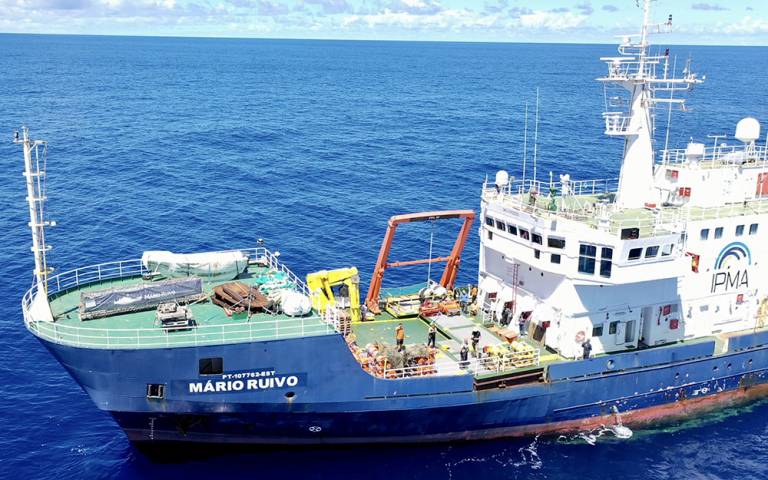Explosions from a sinking ship are among the unexpected sounds detected by 50 highly sensitive seismometers placed on the floor of the Atlantic Ocean as part of an international collaboration led by UCL researcher Professor Ana Ferreira.

The seismometers, which have now been collected after spending a year at the bottom of the ocean, record the Earth's ground motions on the sea floor and thus capture the Earth's "pulse". Many of these recordings capture seismic waves that travelled deep and long inside the Earth following distant earthquakes, as well as from lots of small local ones, which will be used to build images of the Earth's interior down to ~2,800 km depth. The techniques used are similar to those employed by medical doctors to build CAT scans of the human body.
The aim of the project, called UPFLOW (UPward mantle FLOW from novel seismic observations), is to better understand massive "upwellings" of material pushing up from Earth's mantle, which are poorly understood and ultimately cause volcanic eruptions and can lead to earthquakes.
But as well as ground motions due to earthquakes, the seismometers also pick up vibrations caused by a wide range of phenomena - including passing ships, magma intrusions in nearby volcanoes causing small local earthquakes, and singing whales.
Some signals in the data were linked to a massive volcanic eruption on the other side of the planet. The January 2022 Hunga-Tonga Hunga-Ha'apai eruption sent pressure waves through the Earth's atmosphere that connected with the sea surface and were detected by the seismometers on the seafloor.
Other signals were linked to the sinking of the Felicity Ace ship near the Azores, carrying 4,000 luxury cars on 1 March 2022. The signals suggest that there may have been separate explosions as the ship sank.
The seismometers were deployed as deep as 5km below sea level, across a region encompassing the Canary islands and the archipelagos of Azores and Madeira.
They were collected over five weeks during an expedition on the research vessel Mário Ruivo (owned by project partner IPMA, the Portuguese Institute of Sea and Atmosphere).
The research team retrieved the seismometers by sending a series of sounds, or an acoustic code, to the instrument, which the instrument answered with its own unique acoustic signal. Another sound code from the ship instructed the instrument to release itself from its anchor, so that it floated to the surface. The process, said Professor Ferreira, "felt a bit like magic".






